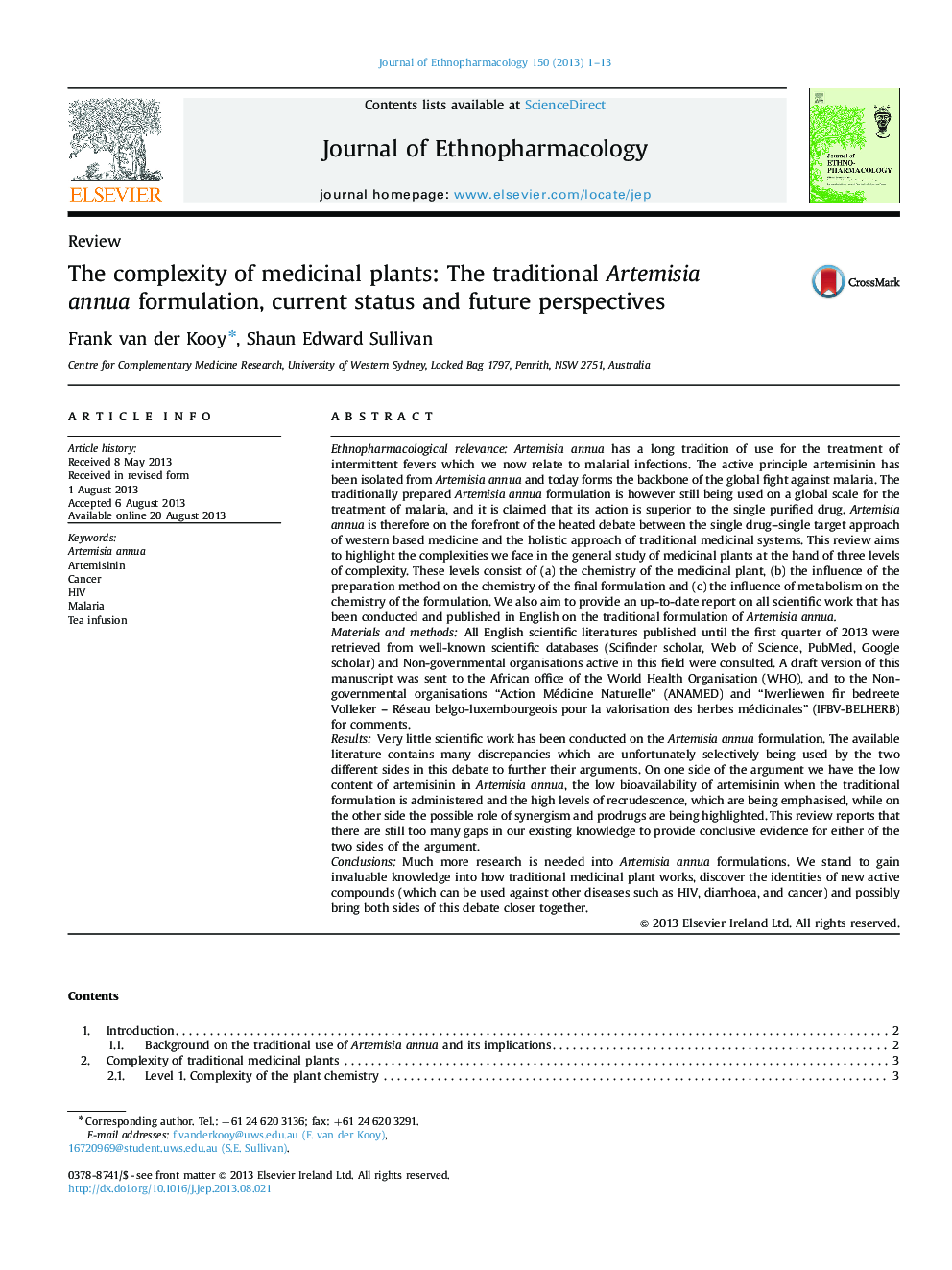| کد مقاله | کد نشریه | سال انتشار | مقاله انگلیسی | نسخه تمام متن |
|---|---|---|---|---|
| 5836919 | 1123954 | 2013 | 13 صفحه PDF | دانلود رایگان |

Ethnopharmacological relevanceArtemisia annua has a long tradition of use for the treatment of intermittent fevers which we now relate to malarial infections. The active principle artemisinin has been isolated from Artemisia annua and today forms the backbone of the global fight against malaria. The traditionally prepared Artemisia annua formulation is however still being used on a global scale for the treatment of malaria, and it is claimed that its action is superior to the single purified drug. Artemisia annua is therefore on the forefront of the heated debate between the single drug-single target approach of western based medicine and the holistic approach of traditional medicinal systems. This review aims to highlight the complexities we face in the general study of medicinal plants at the hand of three levels of complexity. These levels consist of (a) the chemistry of the medicinal plant, (b) the influence of the preparation method on the chemistry of the final formulation and (c) the influence of metabolism on the chemistry of the formulation. We also aim to provide an up-to-date report on all scientific work that has been conducted and published in English on the traditional formulation of Artemisia annua.Materials and methodsAll English scientific literatures published until the first quarter of 2013 were retrieved from well-known scientific databases (Scifinder scholar, Web of Science, PubMed, Google scholar) and Non-governmental organisations active in this field were consulted. A draft version of this manuscript was sent to the African office of the World Health Organisation (WHO), and to the Non-governmental organisations “Action Médicine Naturelle” (ANAMED) and “Iwerliewen fir bedreete Volleker - Réseau belgo-luxembourgeois pour la valorisation des herbes médicinales” (IFBV-BELHERB) for comments.ResultsVery little scientific work has been conducted on the Artemisia annua formulation. The available literature contains many discrepancies which are unfortunately selectively being used by the two different sides in this debate to further their arguments. On one side of the argument we have the low content of artemisinin in Artemisia annua, the low bioavailability of artemisinin when the traditional formulation is administered and the high levels of recrudescence, which are being emphasised, while on the other side the possible role of synergism and prodrugs are being highlighted. This review reports that there are still too many gaps in our existing knowledge to provide conclusive evidence for either of the two sides of the argument.ConclusionsMuch more research is needed into Artemisia annua formulations. We stand to gain invaluable knowledge into how traditional medicinal plant works, discover the identities of new active compounds (which can be used against other diseases such as HIV, diarrhoea, and cancer) and possibly bring both sides of this debate closer together.
163
Journal: Journal of Ethnopharmacology - Volume 150, Issue 1, 28 October 2013, Pages 1-13